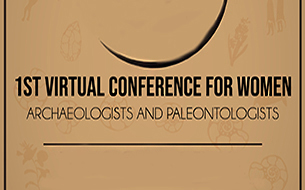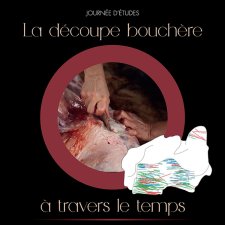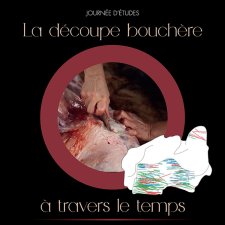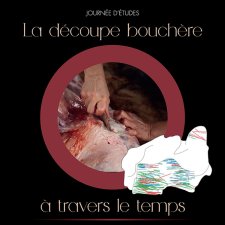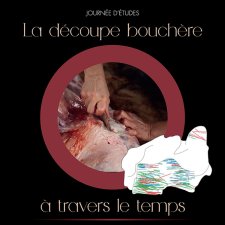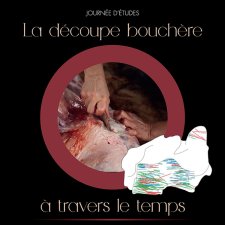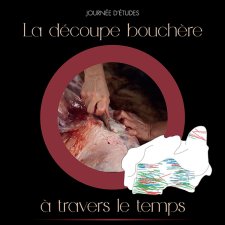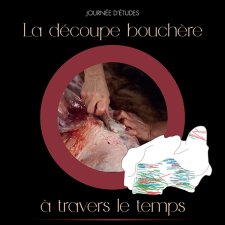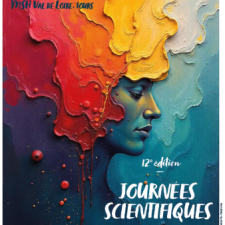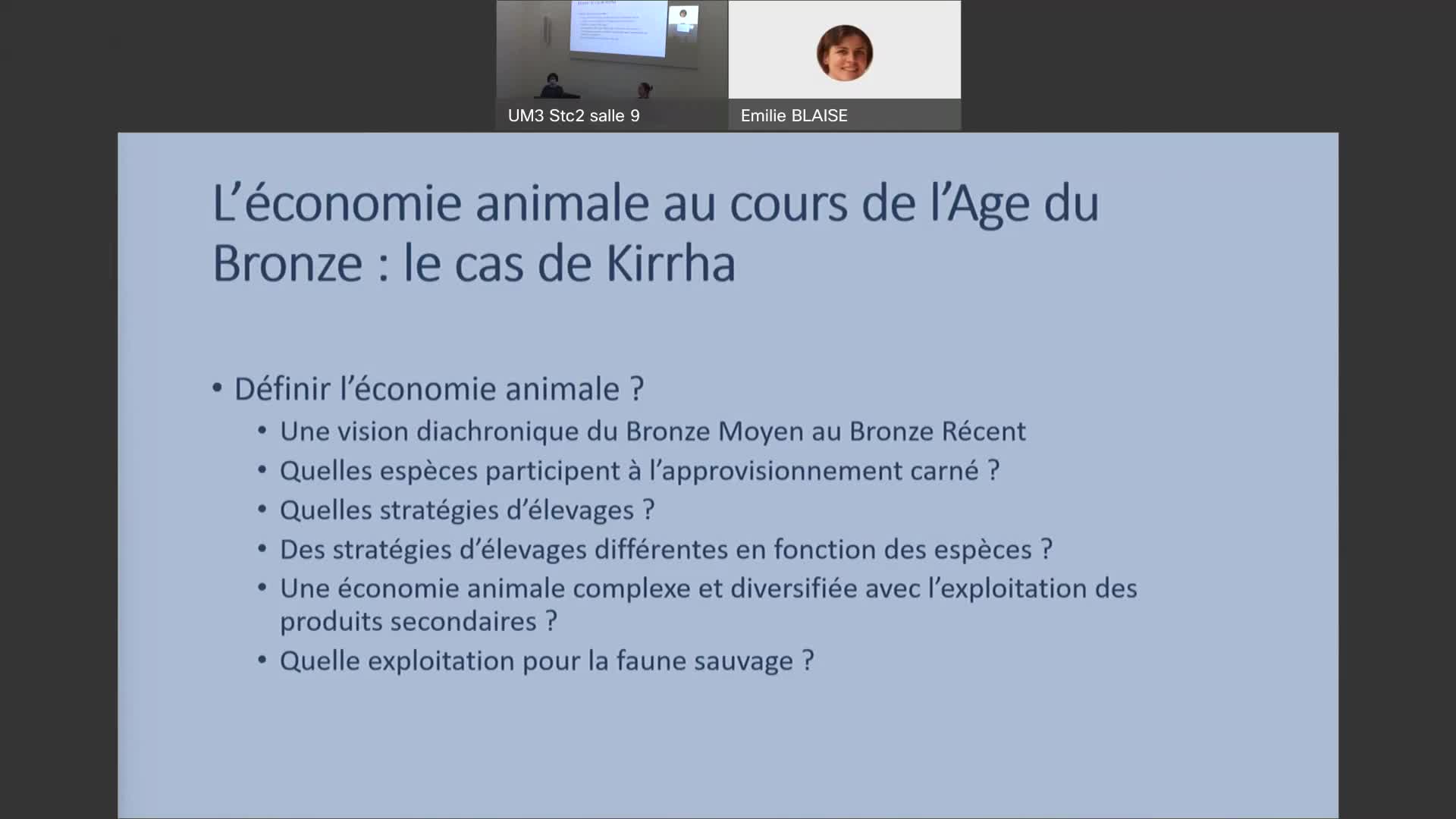Notice
Postnatal shape changes in the rodent mandible at a macroevolutionary scale / Morgane Dubied
- document 1 document 2 document 3
- niveau 1 niveau 2 niveau 3
Descriptif
Postnatal shape changes in the rodent mandible at a macroevolutionary scale / Morgane Dubied, in colloque "1st Virtual Conference for Women Archaeologists and Paleontologists. Nouveaux apports à l’étude des populations et environnements passés" organisé par le laboratoire Travaux et Recherches Archéologiques sur les Cultures, les Espaces et les Sociétés (TRACES) de l’Université Toulouse Jean Jaurès et le laboratoire Paléontologie Évolution Paléoécosystèmes (PALEVOPRIM) de l'Université de Poitiers, sous la responsabilité scientifique de Julie Bachellerie, Ana Belén Galán López (Traces), Émilie Berlioz et Margot Louail (Palevoprim). Université Toulouse Jean Jaurès, 8-9 mars 2021.
Session 1 : Morphological variability, taxonomy and adaptations.
Postnatal growth in mammals is a developmental period with important changes in skull and mandible functions. During the transition from the juvenile to the adult head, major biomechanical changes happen in relation to changes in the use of the masticatory apparatus around weaning, from sucking to gnawing andchewing movements. Mandible development is strongly interconnected with the muscle changes and tooth growth, much more than the skull that is constrained by additional functional demands. Epigenetic interactions are thought to integrate the different parts of the mandible by controlling the spatialization of bone formation and remodeling in response to biomechanical strain. Rodent is a very diverse and disparate mammal order, allowing to observe postnatal changes on a large scale. They are classified according to their mandible and muscle anatomies in three main suborders: myomorphs, hystricomophs and sciuromorphs. These suborders present a wide variety of mandible forms and various types of tooth growth (brachyodonty, hypsodonty, hypselodonty) or life-history traits. We performed 3D morphometric geometrics on juvenile and adult mandibles to model the postnatal changes at a macroevolutionary scale by analyzing variation of ontogenetic trajectories of mandible shape across 16 species of the three main suborders. We explored developmental morphospace and postnatal shape changes taking into consideration the phylogeny. A common developmental trend of the mandible was observed across rodents leading to an enlargement of the masseter fossae, in relation to the development of the masseter muscles during postnatal growth. Hypselodonty, the continuous growth of teeth, appears to have a special signature on the mandible development. The effects of muscle and tooth growths on postnatal trajectories suggest opportunitiesfor developmental plasticity in the evolution of the mandible shape. This may have differed across rodents, as the main patterns of postnatal growth vary between myomorphs and hystricomorphs and seem to be clade specific.
Thème
Documentation
Références documentaires
DUBIED, Morgane, SOLÉ, Floréal, MENNECART, Bastien (2019). The cranium of Proviverra typica (Mammalia, Hyaenodonta) and its impact on hyaenodont phylogeny and endocranial evolution, Palaeontology, 6, 62, 983-1001.
SOLÉ, Floréal, DUBIED, Morgane, LE VERGER, Kevin, MENNECART, Bastien (2018). 3D model related to the publication: Niche partitioning of the European carnivorous mammals during the paleogene, PALAIOS, 11, vol. 33, 514–523.
Liens
Programme du colloque "1st Virtual Conference for Women Archaeologists and Paleontologists" (8-9 mars 2021)
Website du Laboratoire Paléontologie Évolution Paléoécosystèmes Paléoprimatologie (PALEVOPRIM)
Livret des résumés des communications du colloque "1st Virtual Conference for Women Archaeologists and Paleontologists. Nouveaux apports à l’étude des populations et environnements passés" (8-9 mars 2021)
Site internet dédié au colloque "1st Virtual Conference for Women Archaeologists and Paleontologists" (8-9 mars 2021)
Dans la même collection
-
Sensivity analysis to morphological changes of the shoulder joint: application to percussio…
Blasi-ToccacceliAliciaSensivity analysis to morphological changes of the shoulder joint: application to percussion gestures during Oldowan debitage / Alicia Blasi-Toccacceli, in colloque "1st Virtual Conference for
-
"Ouranopithecus macedoniensis" (late Miocene, Greece): analysis of mandibular fragments using …
IoannidouMelaniaOuranopithecus macedoniensis (late Miocene, Greece): analysis of mandibular fragments using 3D geometric morphometrics / Melania Ioannidou, in colloque "1st Virtual Conference for Women
-
Comminution capabilities of extant and fossil anthropoids during molar intercuspation: a preliminar…
WalkerAxelle E. C.Comminution capabilities of extant and fossil anthropoids during molar intercuspation: a preliminary experiment using a chewing simulator / Axelle E. C. Walker, in colloque "1st Virtual Conference for
-
New sperm whale cranium from the late Miocene and a revised family attribution for the small crown …
AlfsenApollineNew sperm whale cranium from the late Miocene and a revised family attribution for the small crown physeteroid Thalassocetus / Apolline Alfsen, in colloque "1st Virtual Conference for Women
-
What is shaping the brain? A perspective on brain size evolution in carnivorans / Margot…
MichaudMargotWhat is shaping the brain? A perspective on brain size evolution in carnivorans / Margot Michaud, in colloque "1st Virtual Conference for Women Archaeologists and Paleontologists. Nouveaux
-
Cranial vault healing in modern humans: input of archaeological and clinical data / Aliéno…
LepetitAliénorCranial vault healing in modern humans: input of archaeological and clinical data / Aliénor Lepetit, in colloque "1st Virtual Conference for Women Archaeologists and Paleontologists. Nouveaux
-
A transdisciplinary approach to reconstruct the Nilotic socio-ecosystem in Luxor west bank during t…
NicatoreGiuliaA transdisciplinary approach to reconstruct the Nilotic socio-ecosystem in Luxor west bank during the Ptolemaic period (3rd-1st centuries BC.) / Giulia Nicatore, in colloque "1st Virtual Conference
-
Tracing Human Ancestral Migration from its Symbiotic Bacteria / Alexia Nguyen Trung
Nguyen TrungAlexiaTracing Human Ancestral Migration from its Symbiotic Bacteria / Alexia Nguyen Trung, in colloque "1st Virtual Conference for Women Archaeologists and Paleontologists. Nouveaux apports à l’étude des
-
From monoliths to megaliths: a new approach on the megalithic burials of southwestern France / Bosc…
BoscusSarahFrom monoliths to megaliths: a new approach on the megalithic burials of southwestern France / Boscus Sarah, in colloque "1st Virtual Conference for Women Archaeologists and Paleontologists. Nouveaux
-
Foragers and their symbolic landscape. Understanding the role of rock art in the territoriality of …
JobardLéaForagers and their symbolic landscape. Understanding the role of rock art in the territoriality of Later Stone Age Matobo populations / Léa Jobard, in colloque "1st Virtual Conference for Women
-
Towards a tracking of past bird seasonal migrations through geological times: what could isotopes t…
DuhamelAnaïsTowards a tracking of past bird seasonal migrations through geological times: what could isotopes tell us? / Anaïs Duhamel, in colloque "1st Virtual Conference for Women Archaeologists and
-
Study of human group behaviors during the Last Glacial Maximum in the east Carpathian area from zoo…
DemayLaëtitiaStudy of human group behaviors during the Last Glacial Maximum in the east Carpathian area from zooarchaeological remains / Laëticia Demay, in colloque "1st Virtual Conference for Women Archaeologists
Sur le même thème
-
La découpe bouchère à travers le temps : introduction de la journée d'études
CostamagnoSandrineÀ destination principalement des étudiantes et étudiants en archéologie ainsi que des archéozoologues, cette journée visait à mettre en lumière la diversité des pratiques de boucherie à travers le
-
Décharner, mettre en pièces, fracturer le gibier au Paléolithique : même menu, mêmes façons de fair…
SoulierMarie-CécileBirousteClémentCostamagnoSandrineÀ destination principalement des étudiantes et étudiants en archéologie ainsi que des archéozoologues, cette journée visait à mettre en lumière la diversité des pratiques de boucherie à travers le
-
Défaire pour bien faire ? La désarticulation des basipodes de renne au Magdalénien moyen
BirousteClémentCostamagnoSandrineÀ destination principalement des étudiantes et étudiants en archéologie ainsi que des archéozoologues, cette journée visait à mettre en lumière la diversité des pratiques de boucherie à travers le
-
Jusqu’où peut-on aller dans la description des pratiques bouchères des groupes humains préhistoriqu…
ValAuroreÀ destination principalement des étudiantes et étudiants en archéologie ainsi que des archéozoologues, cette journée visait à mettre en lumière la diversité des pratiques de boucherie à travers le
-
Mes os sans stries… le partage et la découpe au Mésolithique
GardeurMarineMallyeJean-BaptisteÀ destination principalement des étudiantes et étudiants en archéologie ainsi que des archéozoologues, cette journée visait à mettre en lumière la diversité des pratiques de boucherie à travers le
-
Restituer l’histoire de la boucherie par l’archéologie : l’exemple de la période gauloise
Roure-HorardMarie-PierreÀ destination principalement des étudiantes et étudiants en archéologie ainsi que des archéozoologues, cette journée visait à mettre en lumière la diversité des pratiques de boucherie à travers le
-
Archéozoologie et alimentation médiévale : focus sur une boucherie à Saint-Quentin (XVe siècle)
ClavelBenoîtÀ destination principalement des étudiantes et étudiants en archéologie ainsi que des archéozoologues, cette journée visait à mettre en lumière la diversité des pratiques de boucherie à travers le
-
Du pot aux recettes : expérimentation de préparations gauloises, romaines, médiévales et modernes,…
Roure-HorardMarie-PierreNous disposons, sur de nombreux sites archéologiques, de céramiques à usage culinaire gauloises, romaines, médiévales et modernes dont les argiles ont enregistré, par imprégnation, les marqueurs
-
Alimentation et élevage en Grèce centrale à l’âge du Bronze. Le cas de Kirrha
OrgeoletRaphaëlAniMed, 24 février 2022 - Raphaël ORGEOLET (MCF, CCJ Aix-en-Provence) et Marion SIRITO-OLIVIER (doctorante UPV-Montpellier 3, archéozoologue, UMR 5140 ASM)
-
-
Sylvain Foucras - « L’énigme des sépultures de chevaux au pied de Gergovie »
L'archéozoologue Sylvain Foucras, auteur de l'ouvrage, Sépultures de chevaux devant Gergovie. Archéozoologie des rituels gaulois, aux Presses universitaires Blaise Pascal, a inauguré le cycle de
-
"Ouranopithecus macedoniensis" (late Miocene, Greece): analysis of mandibular fragments using …
IoannidouMelaniaOuranopithecus macedoniensis (late Miocene, Greece): analysis of mandibular fragments using 3D geometric morphometrics / Melania Ioannidou, in colloque "1st Virtual Conference for Women


